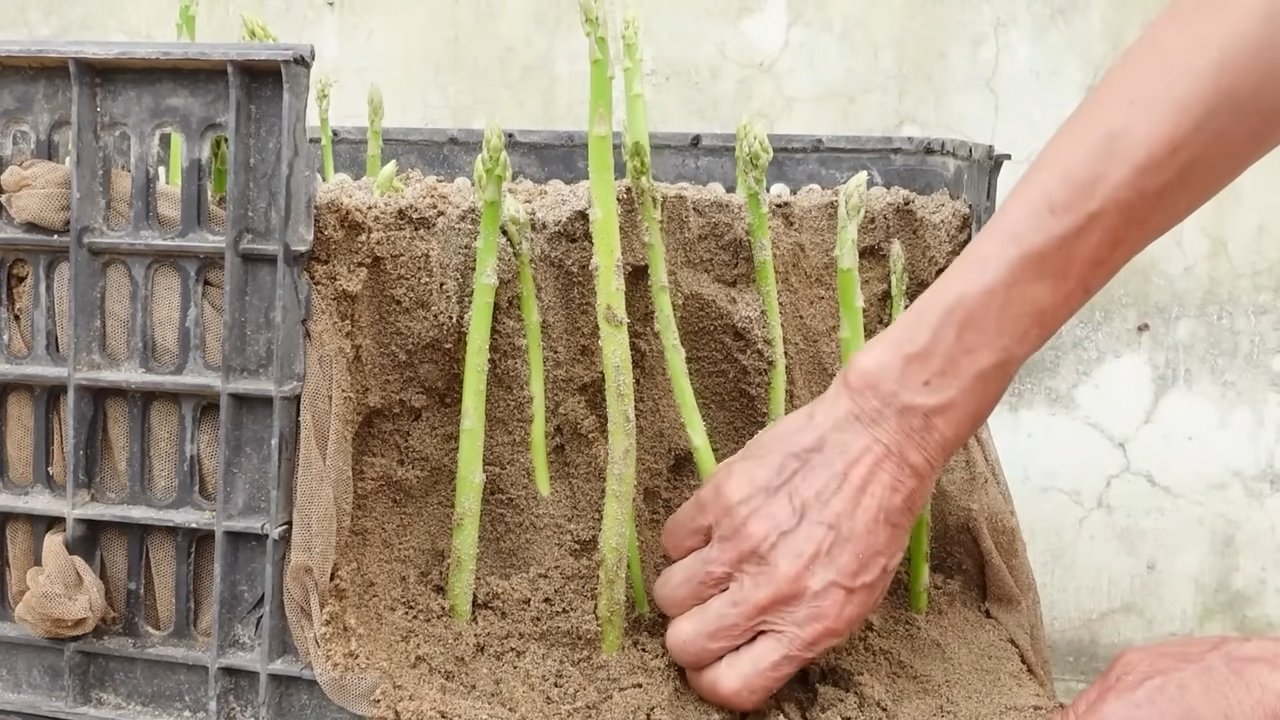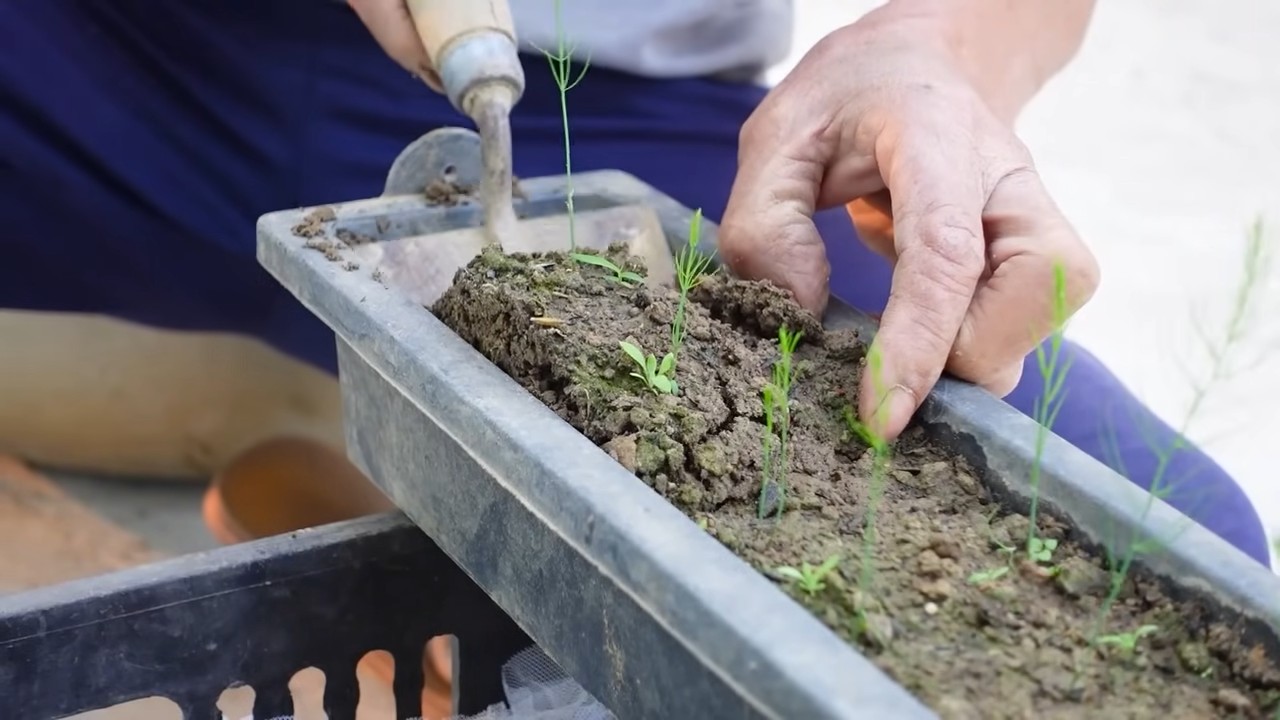Asparagus Growing Tips: Unlock the secrets to a thriving home garden and harvest your own delicious spears! Have you ever dreamed of strolling into your backyard and snipping fresh, vibrant asparagus for dinner? It’s more achievable than you think, and this DIY guide is your key to success. For centuries, asparagus has been prized for its delicate flavor and nutritional benefits, gracing the tables of emperors and commoners alike. From ancient Rome, where it was considered a delicacy, to modern-day gardens, asparagus has a rich history.
But let’s be honest, getting those perfect spears can sometimes feel like a challenge. Maybe you’ve struggled with thin, weak stalks, or perhaps your asparagus bed just hasn’t taken off the way you hoped. That’s where these asparagus growing tips come in! I’m going to share some simple yet effective DIY tricks and hacks that will transform your asparagus patch from lackluster to luscious. Whether you’re a seasoned gardener or just starting out, these tips will help you cultivate a bountiful harvest year after year. Get ready to enjoy the satisfaction of growing your own fresh, healthy asparagus – it’s easier than you think!

Growing Asparagus: A Beginner’s Guide to a Bountiful Harvest
Asparagus, that delicious and elegant spring vegetable, might seem intimidating to grow, but trust me, it’s totally achievable with a little patience and the right know-how. I’m going to walk you through everything you need to know to cultivate your own asparagus patch, from choosing the right location to harvesting those tender spears. Get ready for years of fresh asparagus right from your backyard!
Choosing the Right Asparagus Variety
Before you even think about digging, you need to select the right asparagus variety for your climate and preferences. Here are a few popular choices:
* Jersey Knight: This is a widely recommended variety known for its high yields, disease resistance, and all-male plants (meaning no unwanted seedlings popping up everywhere). It’s a great choice for beginners.
* Jersey Giant: Similar to Jersey Knight, but produces slightly larger spears. Also an all-male variety.
* Purple Passion: A unique variety with beautiful purple spears that turn green when cooked. It’s sweeter and more tender than green varieties.
* Mary Washington: An older variety that’s still popular for its reliability and good flavor. However, it’s not an all-male variety, so you might get some seedlings.
Preparing Your Asparagus Bed: Location, Location, Location!
Asparagus is a perennial, meaning it will come back year after year. So, choosing the right location is crucial. Think long-term!
* Sunlight: Asparagus needs at least 6-8 hours of direct sunlight per day. The more sun, the better the yield.
* Soil: Well-drained soil is essential. Asparagus hates soggy roots. Aim for a sandy loam soil that’s rich in organic matter.
* Space: Asparagus plants can get quite large, so give them plenty of room. Allow at least 4 feet between rows and 12-18 inches between plants within a row.
* Avoid Shady Areas: Don’t plant near trees or buildings that will cast shade on your asparagus bed.
* Consider Drainage: If your soil is heavy clay, amend it with plenty of compost and consider creating raised beds to improve drainage.
Step-by-Step Planting Guide
Okay, now for the fun part – planting! I’m going to break it down into easy-to-follow steps.
1. Prepare the Soil (Seriously, Do This Well!): This is the most important step! Dig a trench that’s about 12 inches wide and 6-8 inches deep. Remove any rocks, weeds, or debris. Amend the soil with plenty of compost, well-rotted manure, or other organic matter. I like to add a slow-release fertilizer formulated for vegetables at this stage as well. Mix everything in thoroughly.
2. Create a Ridge: In the bottom of the trench, create a small ridge of soil down the center. This is where you’ll place the asparagus crowns.
3. Position the Crowns: Place the asparagus crowns on top of the ridge, spacing them about 12-18 inches apart. Gently spread out the roots around the crown. Make sure the crown (the central bud) is facing upwards.
4. Cover the Crowns: Cover the crowns with about 2-3 inches of soil. Water gently to settle the soil.
5. Gradually Fill the Trench: As the asparagus spears begin to grow, gradually fill in the trench with more soil. This encourages the plant to develop a strong root system. Continue adding soil until the trench is completely filled.
6. Water Regularly: Keep the soil consistently moist, but not soggy, especially during the first growing season.
7. Mulch: Apply a layer of mulch around the plants to help retain moisture, suppress weeds, and regulate soil temperature. Straw, wood chips, or shredded leaves are all good options.
Caring for Your Asparagus Patch: The Long Game
Asparagus requires patience. You won’t be harvesting much (if anything) in the first year. This is because the plants need time to establish a strong root system.
* Weeding: Keep the asparagus bed free of weeds. Weeds compete with the asparagus for nutrients and water. Hand-pull weeds carefully to avoid damaging the asparagus roots.
* Fertilizing: Fertilize your asparagus patch in early spring with a balanced fertilizer or compost. You can also side-dress with compost throughout the growing season.
* Watering: Asparagus needs consistent moisture, especially during dry periods. Water deeply and regularly, especially during the first few years.
* Pest and Disease Control: Asparagus is relatively pest and disease-resistant, but keep an eye out for common pests like asparagus beetles. Hand-picking beetles or using insecticidal soap can help control infestations.
* Cutting Back Foliage: In the fall, after the foliage has turned yellow or brown, cut it back to the ground. This helps prevent disease and allows the plant to rest for the winter.
Harvesting Your Asparagus: Patience is a Virtue!
This is where the patience pays off! But remember, don’t get too eager.
* Year 1: Resist the urge to harvest any spears in the first year. Let the plants focus on establishing their root system.
* Year 2: You can harvest a few spears in the second year, but only for a short period (about 2-3 weeks). This will allow the plants to continue to grow and strengthen.
* Year 3 and Beyond: In the third year and beyond, you can harvest asparagus for a longer period (6-8 weeks).
* Harvesting Technique: Harvest spears when they are about 6-8 inches tall and about as thick as your finger. Snap the spears off at ground level. Avoid cutting the spears, as this can damage the crown.
* Stop Harvesting: Stop harvesting when the spears become thin and spindly. This indicates that the plants need to rest and replenish their energy reserves.
Troubleshooting Common Asparagus Problems
Even with the best care, you might encounter a few problems along the way. Here are some common issues and how to address them:
* Thin Spears: Thin spears can be a sign of nutrient deficiency, lack of water, or overcrowding. Fertilize your asparagus patch, water regularly, and thin out the plants if necessary.
* Asparagus Beetles: These pesky beetles can damage asparagus spears and foliage. Hand-pick beetles or use insecticidal soap to control infestations.
* Crown Rot: Crown rot is a fungal disease that can cause the asparagus plants to rot. Ensure good drainage and avoid overwatering to prevent crown rot.
* Weeds: Weeds compete with asparagus for nutrients and water. Keep the asparagus bed free of weeds by hand-pulling or using mulch.
Extending Your Harvest Season
Want to enjoy asparagus for even longer? Here are a few tips:
* Plant Different Varieties: Plant early- and late-season varieties to extend your harvest window.
* Succession Planting: Plant new asparagus crowns every few years to ensure a continuous supply of fresh asparagus.
* Cold Frames or Row Covers: Use cold frames or row covers to protect your asparagus plants from frost and extend the growing season.
Enjoying Your Homegrown Asparagus
Now that you’ve harvested your own asparagus, it’s time to enjoy it! Asparagus is delicious steamed, roasted, grilled, or sautéed. It’s also a great addition to salads, soups, and omelets.
Growing asparagus takes time and effort, but the reward of fresh, homegrown asparagus is well worth it. With a little patience and the right care, you can enjoy a bountiful harvest for years to come. Happy gardening!

Conclusion
So, there you have it! Mastering the art of growing your own asparagus isn’t some unattainable gardening dream. It’s a tangible reality, achievable with a little patience, the right knowledge, and a willingness to get your hands dirty. We’ve walked you through the essential steps, from selecting the perfect crowns to nurturing your asparagus bed for years of bountiful harvests.
Why is this DIY asparagus growing trick a must-try? Because nothing compares to the taste of freshly picked asparagus, still warm from the sun. The vibrant green spears, bursting with flavor, are a world apart from the often-tired, travel-worn stalks you find in the grocery store. Beyond the superior taste, growing your own asparagus offers a sense of accomplishment and connection to the food you eat. It’s a sustainable practice that reduces your carbon footprint and puts you in control of what goes into your body. You know exactly what (or rather, what *isn’t*) being used on your plants.
But the benefits don’t stop there. Asparagus is a perennial crop, meaning it will return year after year, providing you with a consistent supply of delicious spears for decades to come. Think of it as an investment in your future culinary enjoyment!
Variations and Suggestions:
Don’t be afraid to experiment! While we’ve outlined a general approach, there’s room for customization based on your specific climate and soil conditions.
* Companion Planting: Consider planting companion plants alongside your asparagus to deter pests and improve soil health. Herbs like basil, parsley, and marigolds are excellent choices.
* Soil Amendments: If your soil is particularly heavy or lacking in nutrients, amend it with compost, well-rotted manure, or other organic matter.
* Variety Selection: Explore different asparagus varieties to find the ones that thrive best in your region and suit your taste preferences. ‘Jersey Knight’ and ‘Mary Washington’ are popular choices, but there are many others to discover.
* Container Growing: While asparagus prefers to be in the ground, you can successfully grow it in large containers if you have limited space. Just be sure to choose a pot that’s at least 18 inches deep and wide, and provide adequate drainage.
We encourage you to embrace the challenge and embark on your own asparagus-growing adventure. The rewards are well worth the effort. Imagine serving a spring meal featuring asparagus you’ve grown yourself – a true testament to your gardening prowess!
So, grab your gardening gloves, prepare your soil, and get ready to experience the joy of harvesting your own delicious asparagus. We’re confident that you’ll be amazed by the results.
Now, we want to hear from you! Have you tried growing asparagus before? What challenges did you face, and what successes did you celebrate? Share your experiences, tips, and photos in the comments below. Let’s create a community of asparagus enthusiasts and learn from each other. Your insights could be invaluable to other aspiring gardeners. Happy growing!
Frequently Asked Questions (FAQ)
How long does it take to grow asparagus from crowns?
Growing asparagus from crowns requires patience. While you might see some initial growth in the first year, it typically takes 2-3 years before you can harvest a significant amount of spears. This waiting period is crucial for allowing the plants to establish a strong root system, which will ensure a productive harvest for many years to come. Resist the urge to harvest heavily in the first few years; instead, focus on letting the plants grow and mature. A light harvest in the third year is usually acceptable.
What is the best time of year to plant asparagus crowns?
The best time to plant asparagus crowns is typically in early spring, as soon as the soil can be worked. This allows the plants to establish themselves before the heat of summer arrives. In warmer climates, you can also plant in the fall. The key is to avoid planting when the ground is frozen or waterlogged. Check your local climate and planting guides for specific recommendations.
How much sun does asparagus need?
Asparagus thrives in full sun, requiring at least 6-8 hours of direct sunlight per day. Adequate sunlight is essential for photosynthesis, which fuels the plant’s growth and development. If you’re planting asparagus in a location that receives less than 6 hours of sunlight, you may notice reduced growth and a smaller harvest. Choose a sunny spot in your garden to give your asparagus the best chance of success.
What kind of soil is best for growing asparagus?
Asparagus prefers well-drained, sandy loam soil with a pH between 6.5 and 7.5. Good drainage is crucial to prevent root rot, which can be a major problem for asparagus plants. If your soil is heavy clay, amend it with plenty of organic matter, such as compost or well-rotted manure, to improve drainage and aeration. Conduct a soil test to determine the pH and nutrient levels, and amend accordingly.
How often should I water asparagus?
Asparagus needs consistent moisture, especially during the growing season. Water deeply and regularly, ensuring that the soil remains moist but not waterlogged. The frequency of watering will depend on your climate and soil type. In general, aim to water about once a week, or more often during hot, dry weather. Mulching around the plants can help to retain moisture and suppress weeds.
How do I fertilize asparagus?
Asparagus benefits from regular fertilization to support its growth and productivity. In early spring, before the spears emerge, apply a balanced fertilizer, such as 10-10-10, according to the package directions. You can also side-dress the plants with compost or well-rotted manure. Avoid over-fertilizing, as this can lead to excessive foliage growth at the expense of spear production.
How do I deal with asparagus beetles?
Asparagus beetles are a common pest that can damage asparagus plants. These beetles and their larvae feed on the spears and foliage, causing unsightly damage and reducing the plant’s vigor. There are several ways to control asparagus beetles, including hand-picking the beetles and larvae, using insecticidal soap, or applying neem oil. Regularly inspect your plants for signs of infestation and take action promptly.
When should I stop harvesting asparagus?
It’s important to stop harvesting asparagus spears at some point during the growing season to allow the plants to replenish their energy reserves for the following year. Typically, you should stop harvesting in late spring or early summer, depending on your climate and the age of the plants. As a general rule, stop harvesting when the spears become thinner and less vigorous. This allows the plants to develop ferns, which will photosynthesize and store energy in the roots.
Can I grow asparagus in containers?
Yes, you can grow asparagus in containers, but it requires a bit more attention than growing it in the ground. Choose a large container that’s at least 18 inches deep and wide, and use a well-draining potting mix. Provide adequate sunlight and water regularly. Container-grown asparagus may not be as productive as plants grown in the ground, but it’s a viable option for gardeners with limited space.
How long will my asparagus plants last?
With proper care, asparagus plants can last for 15-20 years or even longer. The key to longevity is to provide them with the right growing conditions, including well-drained soil, adequate sunlight, regular fertilization, and protection from pests and diseases. By following these guidelines, you can enjoy a bountiful harvest of asparagus for many years to come.




Leave a Comment